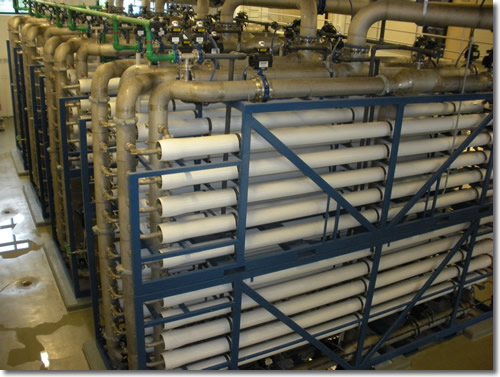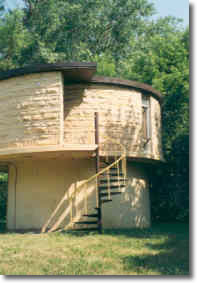Drinking Water Protection
- Drinking Water Protection Home
- About Us
- A-Z Index of Contaminants in Water
- Community Public Water Supply
- Drinking Water Grants and Loans
- Drinking Water Institute
- Drinking Water in Schools and Child Cares
- Drinking Water Revolving Fund
- Laws and Rules
- Noncommunity Public Water Supply
- Source Water Protection
- Water Operator and Certification Training
- Drinking Water Protection Contacts
Related Topics
- Annual Reports
- Drinking Water Risk Communication Toolkit
- Drinking Water Protection External Resources
- Fact Sheets
- Forms
- Invisible Heroes Videos: Minnesota's Drinking Water Providers
- Noncom Notes Newsletter
- Sample Collection Procedures (videos, pictures, written instructions)
- Waterline Newsletter
Related Sites
- 10 States Standards
- Clean Water Fund
- Health Risk Assessment – Guidance Values and Standards for Water
- Minnesota Well Index
- Water and Health
- Wells and Borings
Environmental Health Division
Mankato Moves Ahead with Membranes
From the Spring 2011 Waterline
Quarterly Newsletter of the Minnesota Department of Health Public Water Supply Unit, Waterline
A complete list of feature stories can be found on the Waterline webpage.
 |
| The city of Mankato is completing a 10-year project with upgrades to its water system, including the installation of ultrafiltration membranes. The project has doubled the utility’s capacity to 12 million gallons per day. |
The city of Mankato is nearing the end of a 10-year, multi-phased project to upgrade its water treatment plant and increase capacity. “The main reason for the upgrade was capacity,” said water superintendent Jim Jones. “The plant was getting old, we were approaching water use in the summer near its capacity. Mankato had never before put water restrictions on and did not want to start.” Jones added that 3-and 4-log removal of Cryptosporidium, Giardia, and viruses was also a goal.
With a 20 percent growth in population, to nearly 39,000, projected for the first quarter of the 21st century, the city began working in the early 2000s on facility planning with AECOM (formerly EarthTech) of Minneapolis and Stevens Point, Wisconsin, to double its capacity from 6 million gallons per day (MGD) to 12 MGD.
The original Mankato water treatment plant included lime softening followed by a dual-media (sand and anthracite) filter. The plant was supplied by a pair of cased and open-rock hole type wells, approximately 700 feet deep into the Mount Simon-Hinckley aquifer, and a shallow (60 feet deep) Ranney collector-type well at the confluence of the Blue Earth and Minnesota rivers. The collector well has nine 12-inch lateral slotted pipes extending horizontally in different directions at one elevation two feet off the bottom or (58 feet deep). The water moves to the center to be pumped to the treatment plant.
The upgrade to the water system included the replacement of one well with a higher capacity well and the addition of a new collector well on the Minnesota River, just to the west of the existing collector well, which remained in service along with one of the deep wells.
AECOM project manager Steve Quail explained that nitrate levels in the Blue Earth River vary during the year. Blending with the water from the other wells would keep the nitrate at a low level even when the river had higher levels. The new collector well, on the Minnesota River, does not have such a problem. The deep wells have low levels of iron and manganese but also has radium levels that would exceed the maximum contaminant levels (MCL); however, lime softening also removes the radium, along with calcium, in the finished water to below the MCL.
For the treatment plant, the city and AECOM considered rapid-sand filtration with ultraviolet light and membrane filtration using ultrafilter technology. The capital and operational costs were about the same, and ultrafiltration was chosen. Jones said the ability of ultrafiltration to capture Cryptosporidium and viruses was another consideration. “Ultrafiltration is the future of water treatment, and that’s where Mankato wanted to go,” added Quail.
Pilot studies were then performed on two types of systems, one with submerged membranes and the other with pressure membranes. Quail said both were successful and then were put out for competitive bids with pressure membranes selected on the basis of the bid results.
The ultrafiltration has four skids with two units each. Each unit has 20 pressure vessels with 4 membrane cartridges in each vessel. “Each unit is independently operated, similar to what would be defined as a skid in most plants,” said Quail. “Due to space constraints, two units were placed on one skid, making the skids taller than normal.”
Construction began in 2006 on the new wells, a raw water transmission main, and a high-lift pump station. A reservoir and booster station were added the following year with plant construction starting in 2008. The first phase of the expansion was an addition to the existing plant and the installation of the membrane equipment and recarbonation basins. The existing plant was then remodeled with the conversion of the granular media filters to high-rate softeners. Jones said that the original softeners were put back into use while a hydraulic bottleneck in the new softener piping was retrofitted. “We can use the old system in the winter when water use is lower. The old system started up without any problems and is working fine.”
The project was completed in the spring of 2010.
 |
 |
| The Ranney collector wells: the existing well is on the left, new well on the right.. | |
Go to top
